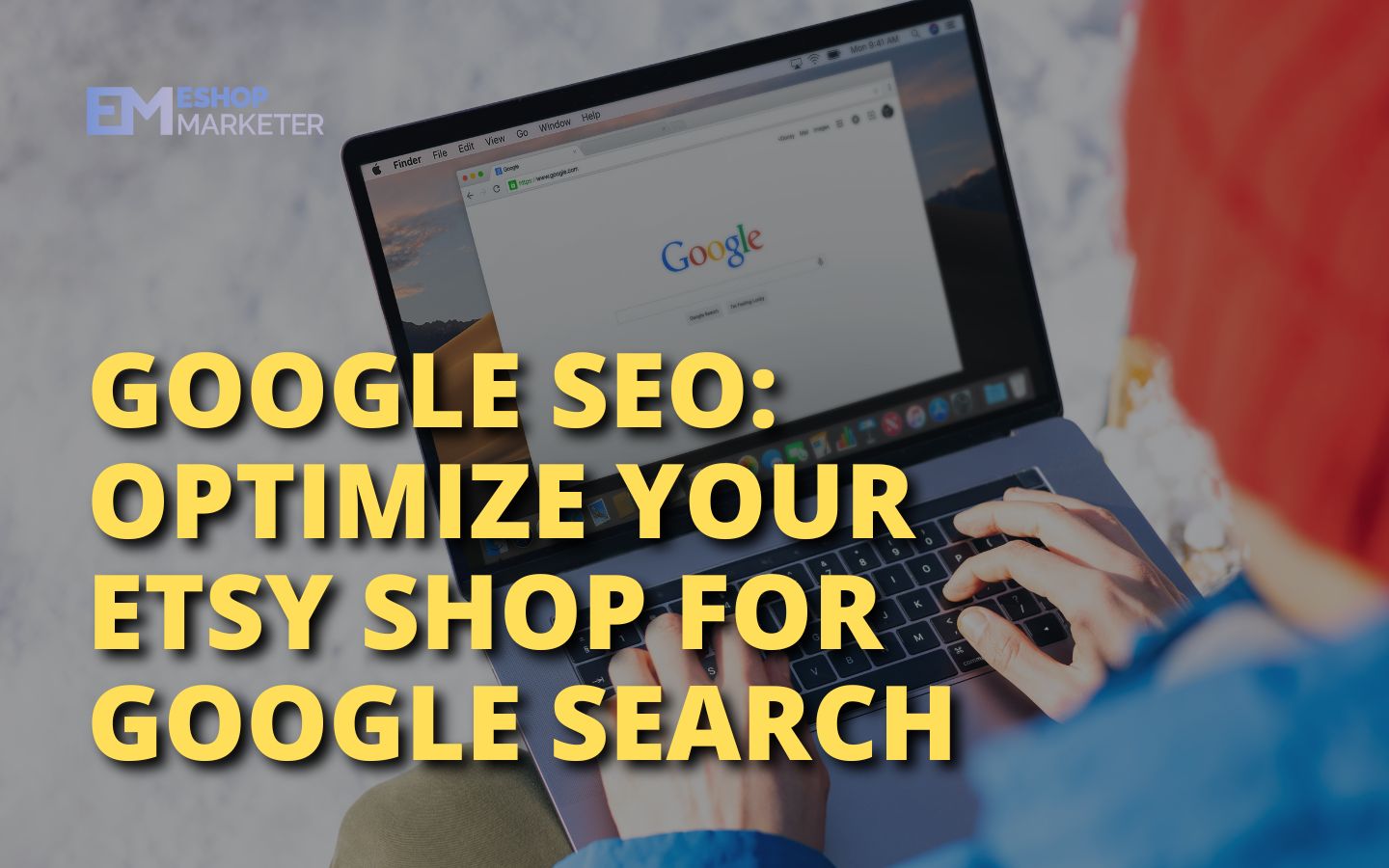Google SEO, or Google search engine optimization, is the practice of optimizing your website for Google. What exactly is a search engine? In the most basic terms, search engines assist people in finding what they are looking for online. You’ve probably heard of and used search engines like Google or Bing to find information about a topic, go to a specific website, or shop online.
Importance of Google SEO for Your Etsy Business
SEO is an unpaid or organic method of driving traffic to your website. Every day, Google receives billions of searches, and many online shoppers rely on Google to find the exact items they’re looking for. Making your brand unique and the products you sell searchable can help your customers find you again and make a repeat purchase. However, it can also help new customers discover your brand, including those who have never purchased from Etsy.
A site that is optimized for search engines is also beneficial to customers. Search engines want to know that users discovered the information—or product—they were looking for. Many SEO best practices are generally good because they keep the customer in mind.

Important Terms
You should be familiar with a few definitions to help you better understand Google SEO.
Keywords: An alternative name for a search query. A keyword can refer to individual words such as “necklace” or phrases such as “personalized gold bar necklace for mom.” Keyword research can assist you in determining which words and phrases to use on your pages.
Ranking: The position of your page in search results. Google ranks pages using a variety of criteria, including relevancy and context.
Relevancy: The usefulness of your page to a searcher. Search engines determine relevance by examining the content and links on your pages and determining how closely they relate to the user’s search.
Search Query: The words that a user types into a search engine. They are also referred to as search terms.
Search Engine Results Page (SERP) is the list of results that appears when you enter a query into Google.
How Do Search Engines Work?
Your search ranking refers to where you appear in the results. Rankings constantly change, and Google frequently updates its algorithm for determining a page’s rank. Optimizing your Etsy shop and listings with Google SEO best practices can help your pages appear in search results.
When a user conducts a web search, the search engine scans all of the pages it has “indexed,” or previously discovered, in search of pages that match the user’s search query and intent.
A page is indexed when it is visited by the Google crawler (also known as “Googlebot”), analyzed for content and meaning, and saved in the Google index. Consider the Google index a massive database or library of web pages. Indexed pages may appear in Google search results. A page that Google has not indexed will not appear on a search engine results page.
When Googlebot searches a page, it looks for context clues to determine the page’s topic. The page’s content, which may include the title, headings, description, images, and video, can assist the bot in determining what the page is about.
Indexing is essential to appear in Google Search, but how do you know if Google has indexed your Shop and Listing pages?
It only takes a few seconds. Go to Google.com and type site: followed by the URL. If your page appears, Google has indexed it.
If your page does not appear, it is because Google still needs to index it. Don’t panic if your page does not appear. Indexation takes time, and Etsy’s internal team is committed to making improvements that will aid in indexation. In the meantime, you can build quality links to your Etsy store from all over the internet. Link to your Etsy shop and listings from your website, blog, or social media page. This can assist Google in finding those pages and shoppers in navigating to your shop to make a purchase.

Keyword Brainstorming Tips
Keywords are words and phrases that people use to search the internet. It would help if you optimized your Etsy pages to include keywords your customers may be searching for. However, remember that the keywords you use on your site should be relevant and specific to your business and the types of searches in which you want to appear.
Keywords That are Related to Your Brand
Make it your priority to have your site appear in branded searches for your brand. You’ll want your website to appear in searches for your brand name and any product names that are unique to you. Customers who have previously purchased from you can find you again, as can new customers who discover your brand through a press mention or at a craft fair.
Keywords That are Related to Your Products
Making your keywords as specific as possible will make your page more relevant to the search—and shoppers who find exactly what they’re looking for on your website are more likely to make a purchase. An online shopper looking for necklaces is unlikely to type “necklace” into Google. They most likely have an idea of the type of necklace they want to buy, such as a “personalized gold nameplate necklace” or a “chain necklace with heart lock.” Search engines want to deliver relevant results, so take advantage of all the opportunities to describe your site, but keep your keywords specific to your shop and product offerings.
Researching Popular Keywords
So, how do you determine which keywords are best for your website? Begin by considering how you would look for your products or brand. Keywords should appear to be natural. More keyword ideas can be found by typing a few words or the beginning of a phrase into Google and seeing what related phrases other people are searching for. Check out the Related Searches section at the bottom of a SERP for more ideas, or use the People Also Ask section to gain insights into people’s questions when searching for a specific product. Some of those questions may be addressed in your listing descriptions.
How to Optimize Different Sections of Your Etsy Shop
Shop About Section
Google values your knowledge, authority in your niche, and trustworthiness as a seller. Tell your story when writing your shop description. Discuss your creative process. Include background information and how you got into creating. Highlight any credentials or years of experience. This is important information not only for Google but also for potential buyers.
Fill out as much information about your shop’s policies as possible. This isn’t just good for Google SEO but also for user experience. Shipping, returns, and exchanges are all important factors that a shopper will consider when purchasing a product.
Consider including a video and several photos in your About section. Photos and videos are another way to appear in Google search results.

Optimizing Your Listings
Listing Title
Make sure your listing titles accurately reflect the product you’re selling. A person should be able to read the title and understand the listing right away. The first 50-60 characters of the Google search engine results page will be displayed, so put the most relevant and important words first.
Listing Description
Listing descriptions should include a descriptive copy to help Google and shoppers understand what your listing is about. Refrain from using your keywords repeatedly. Aim for natural-sounding writing.
The first few lines should emphasize the product and explain what you’re selling. Use the description to detail your product and its distinguishing features. Include information about sizing, colors, materials, features, and any available customizations.
For readability, try formatting your description with shorter paragraphs and bulleted lists, but feel free to write long descriptions. Being descriptive will aid SEO. Fill out every field possible, including payment options, policies, delivery options, and frequently asked questions. Payment and shipping information, in particular, are critical because they can influence buyer decisions.
Essentially, you should create content your customers will want to read and find useful. Ask yourself, “What would I want to know if I were shopping for this?” Both Google and users prefer helpful, descriptive content, so if the information is valuable and relevant, keep it!
Listing Images and Videos
Images and videos are critical components of Google SEO. Not only do they provide contextual information to Google, but your listing pages may also appear in the Google Images and Google Video tabs.
Include several product images in your listing. Sellers on Etsy who use English as their default language can also add descriptive alt text to their images. This is highly beneficial to SEO. Alt text, which stands for alternative text, is used to describe images for people who are blind or have low vision, and it can also help your page appear in Google Images.
You’ll want to accurately describe what’s shown in the photo when writing high-quality alt text. Keywords can also include color, texture, and material information. One word of caution: Do not try to improve your rankings by inserting random keywords into the alt text field. This type of keyword stuffing makes it difficult for people who use screen readers to understand the images on a page.
It is recommended to include a listing video in addition to images. They’re an excellent way to bring your products to life for buyers and may boost your visibility in Google search results.
Want to know how to market your Etsy shop and make it grow? Read this blog post here!


